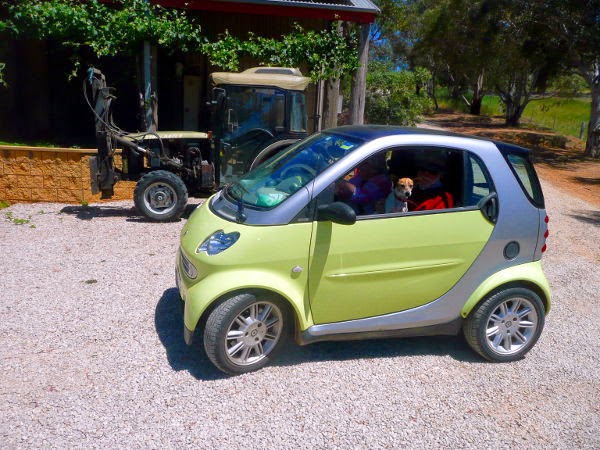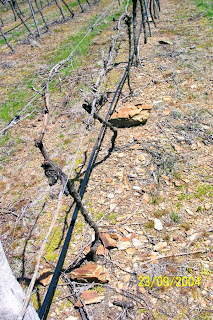Cellar Door Drivers
At the cellar door, one of the first things a winemaker is asked is
how long they've been there. Now there are a number of standard replies which I
use based upon my instant assessment of the potential size of the hoped for
sale. If my interrogators appear to be of a certain social persuasion and seem
to have over invested in a display of all of the good things of this consumer
life, (and as a consequence have bugger all left on the credit card to invest
in the even better things I am offering) my reply is something along the lines
of “ Oh about, now let’s see…hmmm..since
about 7 am”
If the prospect is a relic from a past era with the bum out of
his and or her pants and is driving and or pushing a battered salt encrusted VW
Combi; in short someone who can only have an absurd sense of humour and or
values the good things in this life (and strongly reminds me of my former pre-sales self), then the
reply is likely to be along the lines of “ since
I was a brunette” “ Really..that long
eh?”
But there are some scarey cellar door types who fall out of their
veHicles in a storm cloud of regional maps, cellar door guides (which don’t
include us) with the latest wine app (which doesn't include us) glinting in the socially mediocre sunlight only to stumble over the dog as they blindly trample their way through the mondo grass in their headlong rush to breathlessly demand of me….”so how long
have you been here?” There’s not much room for maneuver when you are about to
be classified by this particularly well connected style of wine buff, so you have to grit your
teeth and play it straight….there’s little chance of a sale anyway and if you don’t
give them an answer they can tick off and tweet to their wine investment club,
they’ll only visit you again..and probably with both of their friends.
Says I “We’re coming up to our 33rd
anniversary this June, and we were the first vineyard winery in Orange” “Is that right, well how come there weren’t
any wineries here before you when they’ve been growing wine in Mudgee for 161
years this month” . Hands up.. I give in.
No I don’t. I think it's largely a cultural thing. Unlike the mostly Protestant
orchardists around Orange, who turned their grapegrowing skills toward the
table, the pioneers of the Mudgee area had had a winery operating at Craigmoor
since 1854 or 1855, well before gold was discovered at Gulgong in the early
1870s. While the Hicks, Hawkes and Joneses
of Canobolas persuasions near Orange were busy growing “cherries, grapes, apples, peaches,
plums, nectarines, ….walnuts, chestnuts, hazelnuts and almonds – (in) short
anything which grows in (mother) England…..with perfect results”, [1]their
contemporaries down the Cudgegong, the Roths, Fiaschi, Muller and Kurtz families to name a few, had
followed the traditions of a different post-harvest heritage and turned their surplus grapes
into wine.
Beulah may have gotten away
with peeling and savouring a grape in the quiet crisp sunlight of a late Orange
autumn, but that same grape in down town 19th century Mudgee would
have long since been fermented into alcohol and probably be on the road to the anxious markets of Sydney or the terminally un-slaked thirsts ot the local
Loaded Dog inn.
It has only been since the relatively recent reductionist approach to all
things wine that the traditional pattern of development has changed and scientifically
driven new areas from Mount Lofty to Mount Canobolas have been opened up to
wine production..or should that be vini-culture. And yet the fact remains that cellar door visitors of all stripes underpin the long term economic success
of many of these new areas and the current industry shakeout will largely be
a reflection of the strength of the cultural drivers which underpin each
locality.
And that’s one driver we all need at our cellar doors
[1] BONE, F.S., ed., Orange
District Guide: Millthorpe, Cadia, Forest Reefs, Thomas Crouch,
1908,pp44-56











